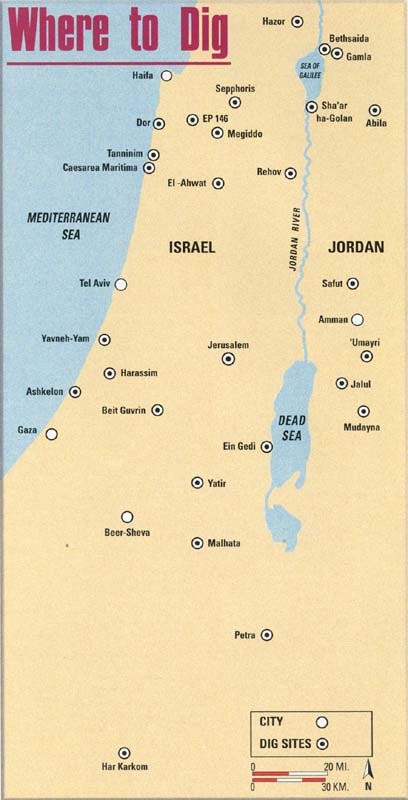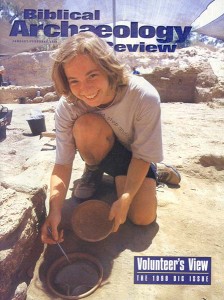Site Gazette

Abila
Ten is Abila’s magic number as the site enters its tenth year of excavation. Situated about ten miles south of Irbid in northern Jordan, Abila is one of the cities of the Decapolis—a federation of ten cities in eastern Palestine (Matthew 4:25; Mark 5:20, 7:31). Several ancient writers mention the site, including Polybius, Pliny the Elder and the geographer Ptolemy. Evidence of human habitation at Abila ranges from 3500 B.C. to 1450 A.D. Many ruins can be seen on the site’s surface. The site consists of two mounds, Tell Abila in the north and Khirbet Umm el-’Amad (Ruins of the Mother of the Columns) in the south. The two mounds are separated by a saddle depression.
A cache of early church glass lamp fragments, five churches, a life-size statue of Artemis, an aqueduct system, painted tombs and a theater were uncovered during past excavations. In 1997 a large cavity was discovered just behind the main part of the theater. In 1998 dig director W. Harold Mare (Covenant Theological Seminary) plans to continue work on the theater, excavate more of Abila’s churches, uncover tombs, deepen the Early Bronze settlement probes and search for the Bronze Age cemetery. The site is open year round. Guided tours are available during the season; no appointment necessary.
Already a library member? Log in here.
Institution user? Log in with your IP address.

